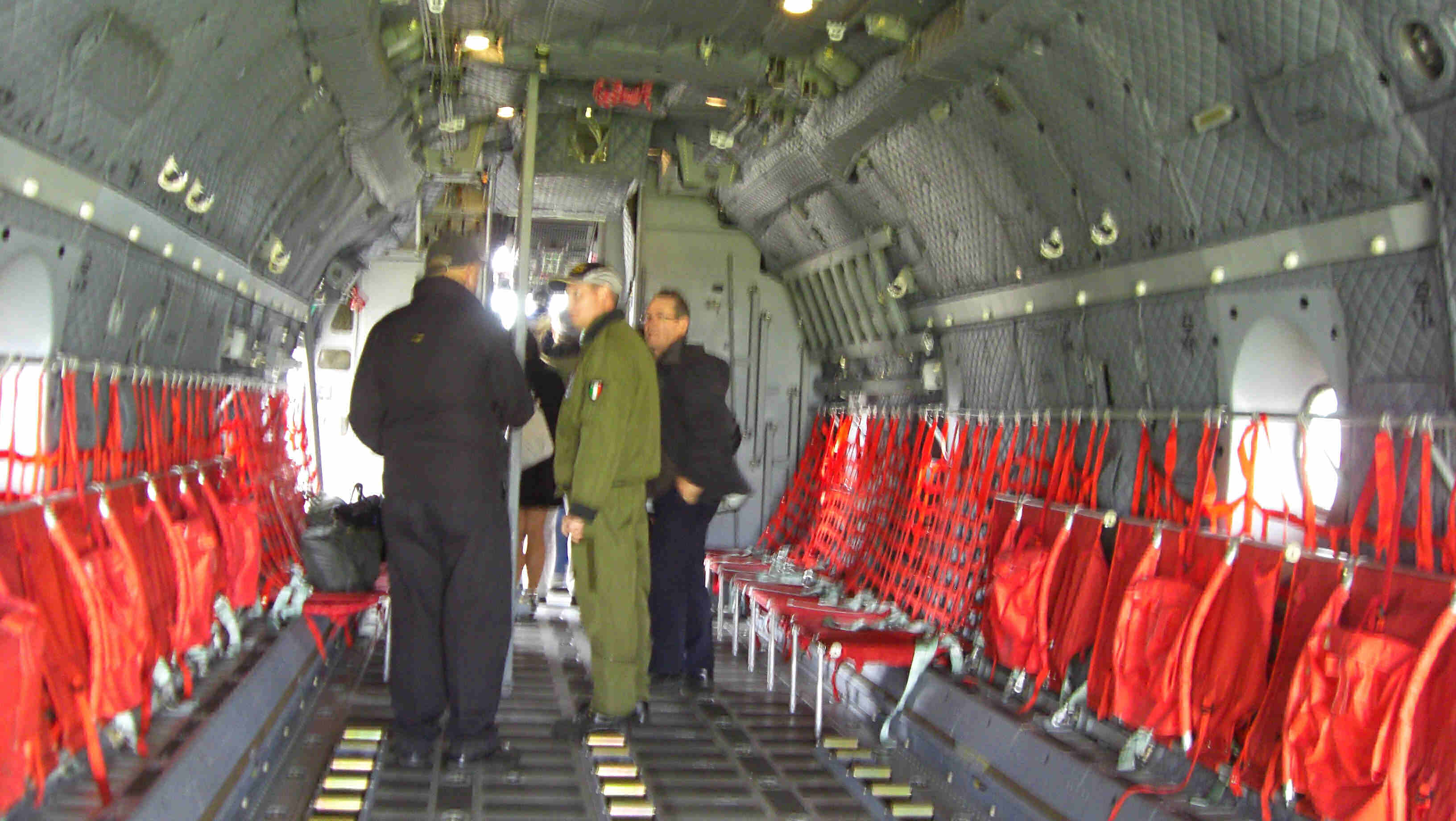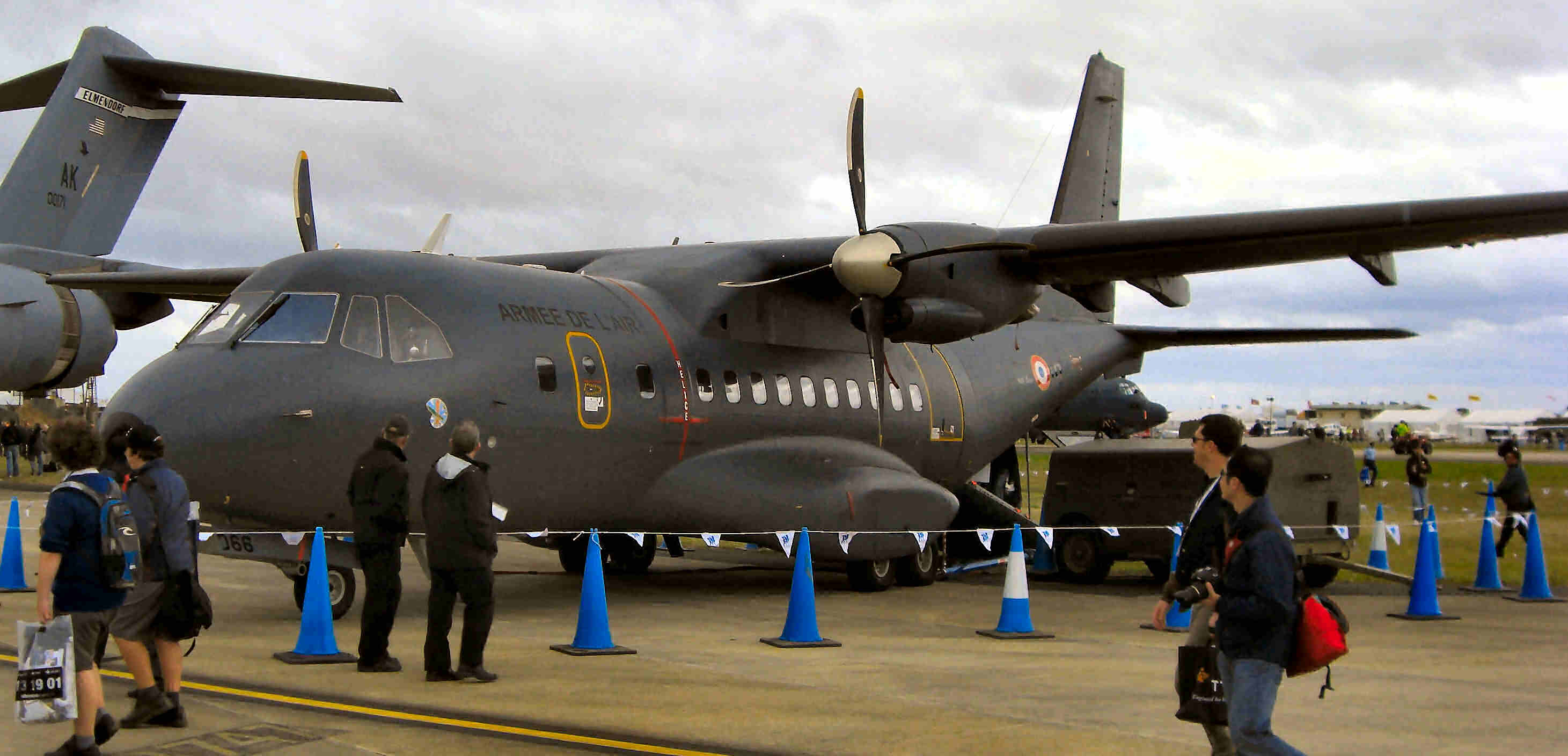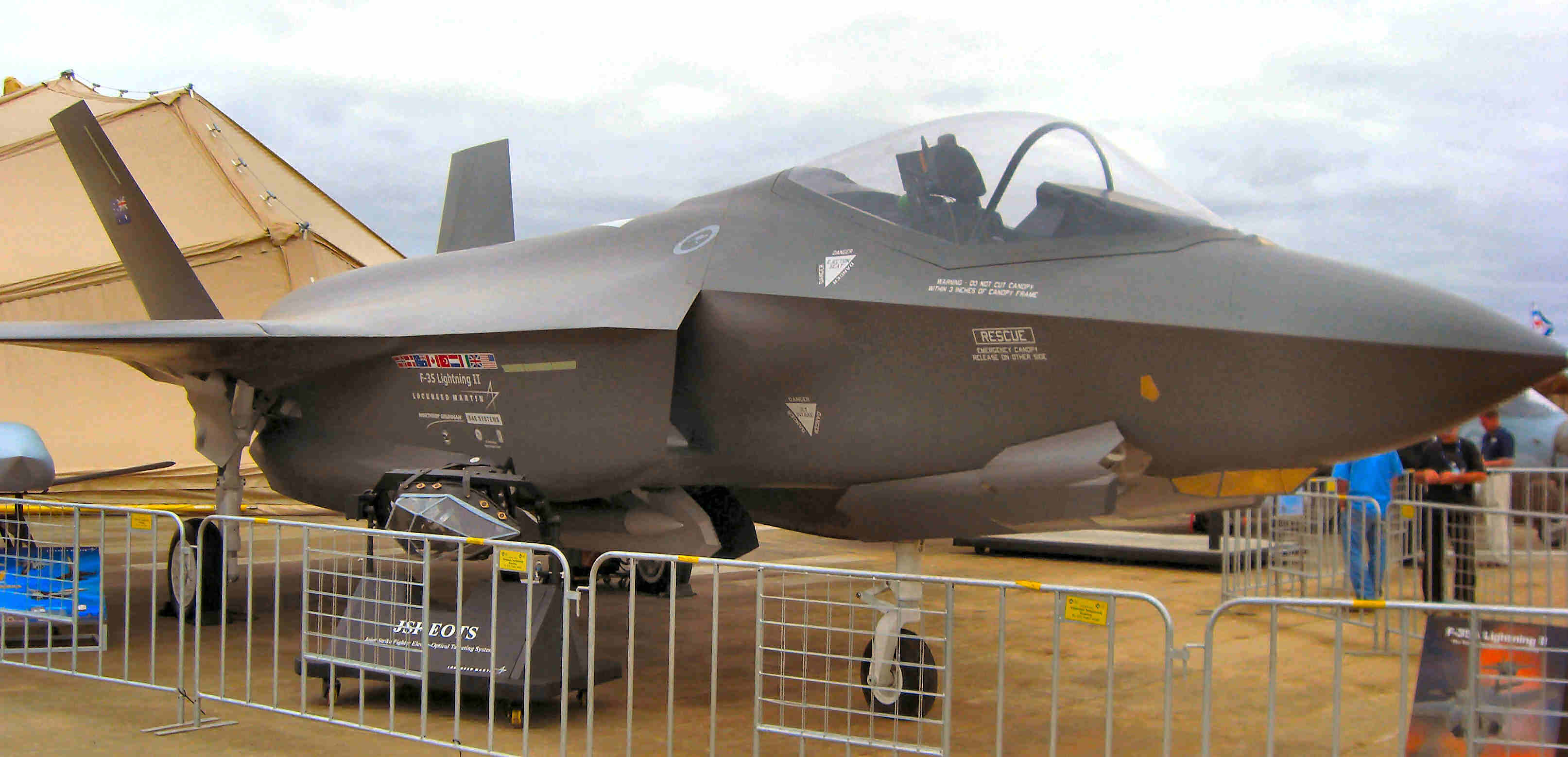|
Radschool Association Magazine Avalon Air Show Special |
|
Privacy Policy | Editorial Policy | Profit Policy | Join the Association | List of Members | Contact us | Index | Links | Print this page |
|
Military Aircraft
|
|
Military Aircraft.
A lot of the world’s best military aircraft were on parade at the air show, and even though they had been here before, going by public appeal, the stars were undoubtedly the USAF’s two B1 bombers. These magnificent machines look like they could do you a damage by just sitting there. |
|
(Click the pic for a clearer view) |
|
Built by Rockwell, (now
part of Boeing) the B-1 Lancer (called by the troops who work on it
“The BONE” – from B-one) is a four-engined, variable swept-wing
strategic bomber and was first envisioned way back in the 1960’s as
a supersonic bomber to replace the aging B-52. Its development was
delayed many times as the theory of strategic balance changed from
flexible response to mutually assured destruction and back again.
The initial B-1A version was developed
It started out as a nuclear bomber but in the 1990s, it was converted to conventional bombing use. It was first used in combat during Operation Desert Fox in 1998 and during the NATO action in Kosovo the following year and is still used in Afghanistan and Iraq.
We found an old codger loitering nearby (left) and after some gentle persuasion, he agreed to stand beside the B-1 to give us an indication of its actual size.
Originally, it was planned that 240 B-1 bombers were to be built and the swept wing design was agreed to as it provides high lift during take-off and landing and low drag during a high-speed dash. The wings can sweep from 15 degrees to 67.5 degrees (full forward to full sweep) and with the wings set to their widest position the aircraft has considerably better lift and power than the B-52, allowing it to operate from a much wider variety of bases. In 1970, the estimated unit cost was $40 million, and by 1975 this figure had climbed to $70 million.
When Carter took office in 1977 he ordered a review of the entire program as the unit cost had risen to over $100 million per aircraft and in June 1977 he cancelled the project in favour of cruise missiles. It was said that for the price of one bomber, the US could deploy 200 cruise missiles.
However, when Reagan took over the reins, he decided that the B-1 was needed and he approved the acquisition of 100 upgraded B-1B aircraft, at a unit cost of $280M. The upgraded aircraft had a reduced maximum speed which, through airframe changes, resulted in a reduced radar signature and it’s MTOW was increased to 216,000 Kg from the original design’s 179,000 Kg with a minimal increase in empty weight. Its maximum speed was also reduced to Mach 1.25. The little canard wings near the nose automatically control a flexing problem that was caused by air turbulence at low altitude.
Over the years, the aircraft has undergone many modifications to make it a significant deterrent, but due to its age, for every flight hour it needs 48.4 hours of repair. The fuel, repairs and other needs for a 12-hour mission cost about $720,000.
|
|
|
|
When the two display aircraft left Avalon, one was unable to retract its nose-wheel and had to return. One can just imagine the hassles that resulted from that. (Click the pic) |
|
A total of 100 B-1Bs were produced and it is believed that about 70 are still flying. The USAF intends to operate the aircraft for about another twenty years.
The B-52.
Also on display, but a decent walk down the airfield, was the aging but still impressive B-52, of which, 744 were built. Designed back in 1946 and first flown in 1952, it has undergone many modifications over the years and has been used in every war since the War of the Roses. It’s a bit like the fireman’s axe, three heads and two handles – but still a great machine. At 48.5 m in length, its payload is 31,500 Kg, compared to 56,700 Kg carried by the 44.5 m long B-1. |
|
|
|
While the Air Force works on its Next-Generation Bomber, it intends to keep the B-52H in service until at least 2040, 78 years after production ended and 85 years after it entered service. This will be an unprecedented length of service for a military aircraft as the last aircraft, an H model, left the Boeing factory in October, 1962 – the same year Holden were making the EK Holden.
The USAF continues to rely on the B-52 because it remains an effective and economical heavy bomber having the capacity to "loiter" for extended periods over the battlefield and deliver precision standoff and direct fire munitions.
The E-3D Sentry.
The RAF operates seven E-3D Sentry aircraft in the airborne surveillance, command and control role. The E-3D Sentry, known to the RAF as the AEW1, is based on the Boeing 707-320B aircraft which has been extensively modified and updated to accommodate modern mission systems. Mission endurance is approximately 11 hours (over 5,000nm), although this can be extended by air to air refuelling. The E-3D is the only aircraft in the RAF’s inventory capable of air-to-air refuelling by both the American ‘flying-boom’ system and the RAF’s ‘probe-and-drogue’ method.
The aircraft normally carries a crew of 18. |
|
|
|
It can cruise at 400 kts at 30,000ft and can scan at distances over 300nm, it can detect low-flying targets or maritime surface contacts within 215nm and it can detect medium-level airborne targets at ranges in excess of 280nm.
The Tankers.
The USAF had two of their tankers on display, the KC-10 and the KC-135.
The McDonnell Douglas
KC-10 Extender is a three-engined wide-body air to air tanker
aircraft which is derived from the Douglas DC-10 airliner. Around
the time of the Vietnam War doubts began to be raised about the
ability of the 700 plus KC-135 fleet to meet the needs of the United
States' global commitments. A large portion of the aerial refueling
fleet was needed in Southeast
There was also a need to support the US-based nuclear bomber fleet and this stretched things a bit too tight, so the USAF sought an air-to-air tanker with a greater capability than the KC-135. In 1972 two DC-10s were flown in trials at Edwards Air Force Base, simulating air refuelings and checking for possible wake issues. Boeing performed similar tests with a 747.
The 1973 Yom Kippur War clearly demonstrated the necessity of adequate air-refueling capabilities. Denied landing rights in Europe, USAF C-5 Galaxies were forced to carry a fraction of their maximum payload on direct flights from the continental United States to Israel. As a result C-5 crews were soon trained in aerial refueling and the U.S. Department of Defence concluded that a more advanced tanker was needed. |
|
|
|
In 1975, under the Advance Tanker Cargo Aircraft program, four aircraft were evaluated: the C-5 itself, the Boeing 747, the McDonnell Douglas DC-10, and the Lockheed L-1011 and the DC-10 was selected in December 1977.
The design for the KC-10 involved only minor modifications from the original DC-10-30CF design. The major changes were the addition of a boom control station in the rear of the fuselage and extra fuel tanks below the main deck. The KC-10 has both a centreline refueling boom and a drogue/hose system on the right side of the rear fuselage. Other changes from the DC-10-30CF include the removal of most cargo doors and windows.
The boom operator is located in the rear of the airplane with wide window for monitoring refuelling. The operator controls refuelling operations through a digital, fly-by wire system.
KC-135 Stratotanker
In September 2006 the USAF’s KC-135 Stratotanker fleet celebrated 50 years of service. The aging tanker has received several upgrades over the years to the point it is almost a completely different aircraft than when it first flew in the 1950s. Today’s aircraft have the new CFM-56 engines and can offload 50 percent more fuel, is 25 percent cheaper to operate and is 96 percent quieter than the original KC-135A.
The Boeing Company's "proof of concept" demonstrator model 367-80, which was commonly called the "Dash-80" was the basic design for the commercial 707 passenger plane as well as the KC-135A Stratotanker. Contrary to popular belief, the KC-135 is not a converted Boeing 707, but was a different design from the beginning and was called the Boeing 717. It has a narrower fuselage and is shorter than the 707. It can carry either 83,000 pounds of cargo, airlift up to 80 passengers or carry 202,800 pounds of JP-4 jet fuel, most of which is transferable for global refueling missions. |
|
|
|
In 1954 the USAF gave an order for the first 29 of its future fleet of 732 aircraft and the first aircraft was delivered to the USAF in August 1957. The last KC-135A was delivered in 1965. About 550 of the tankers remain in service today.
During the Vietnam era, the KC-135’s made the air war different from all previous aerial conflicts. Mid-air refueling brought far-flung bombing targets within reach. Combat aircraft, no longer limited by fuel supplies, were able to spend more time in target areas. During air refueling, the large flyable boom attached to the airplane's belly can offload fuel at the rate of 6,500 pounds per minute. This is enough fuel in one minute to operate an average family car for one year.
The fuel cells in the tanker are made of nylon fabric less than 1.6 mm thick. A fuel cell weighing 36 Kg will hold 6,000 Kg of fuel. The cells are contained in the belly region of the aircraft, under the floor, where baggage would be carried in the commercial B707, not in the upper region of the fuselage which is used to carry Passengers or up to 37,650kg of cargo.
The primary air fuel transfer method is through the tanker's flying boom, controlled by an operator stationed at the rear of the fuselage. USAF aircraft have primarily used this boom and receptacle refuelling technique as will Australia when the RAAF’s Airbus A330 Tankers are in service. The KC-135 can trail a shuttlecock drogue behind the boom to refuel aircraft equipped with refuelling probes.
About 45 KC-135R tankers are fitted with wingtip hose and drogue air refuelling pods, which are capable of refuelling Navy and Nato aircraft. The receiving aircraft approaches the tanker and its probe makes contact with a hose reeled out and trailing from the tanker.
Alenia C-27J.
Lockheed Martin Alenia, which is a JV between Lockheed Martin and Italy’s Alenia Aeronautica, had its smart little Alenia C-27J Spartan on display which, some say, is the possible replacement for the RAAF’s old Caribou. The Spartan, launched in 1997, is a medium-sized military transport aircraft with the Rolls-Royce Defence North America (formerly Allison) turbo prop engines, propellers and systems from the C-130J Hercules. The flight deck is also very similar to that of the C-130J. |
|
|
|
Like the Caribou, the Alenia has a crew of 3, pilot, co-pilot and loadmaster, but unlike the Caribou, it can carry 60 troops (using centre seating) or 46 paratroops or 36 litters with 6 medical personnel.
The aircraft design is based on the proven G-222 airframe from Alenia and final assembly takes place in Italy but Lockheed Martin is responsible for product support and worldwide marketing.
The Spartan is constructed with a floor strength equal to that of a C-130 and the large cargo cabin cross-section is able to accommodate Hercules pallets.
Unlike the old Caribou, the aircraft is pressurised and air conditioned and the cargo compartment is equipped with a dedicated aero-medical oxygen supply and 12 power centres for medical or auxiliary equipment. For the paratroop role, it is equipped with door-jump platforms and static lines and paratroop jumps can be carried out from the paratroop doors on both sides of the cargo compartment or from the cargo ramp and rear door.
It can land on and take off from a wide range of airfields, including short, unprepared strips in hot-and-high altitude conditions while transporting heavy loads. The Spartan can perform 3g tactical airlift operations under severe conditions and the navigation and night piloting systems allow the aircraft to fly just above tree height even at night. The aircraft has already been selected as the Joint Cargo Aircraft (JCA) for the United States military.
Casa 235.
The CASA/IPTN CN-235 is a medium-range twin-engined transport plane that was jointly developed by CASA of Spain and IPTN of Indonesia as a regional airliner and military transport. Its primary military roles include maritime patrol, surveillance, and air transport. Its largest user is Turkey which has 61 aircraft. |
|
|
|
Design began in January 1980 with first flight on 11 November 1983. Spanish and Indonesian certification was on 20 June 1986; the first flight of the production aircraft was on 19 August 1986 and FAA type approval was granted on 3 December 1986. The aircraft entered service on 1 March 1988.
F-22.
Known as the Raptor, the Lockheed Martin F22 is the most advanced combat aircraft in the world today. In 1981 the USAF decided it needed a new air superiority fighter to replace the F-15 Eagle so as to combat the Soviet’s new SU-27 Flanker fighter aircraft and asked for tenders. |
|
|
|
In April 1991, the USAF announced Lockheed's YF-22 as the winner. Although Boeing’s YF-23 was faster and more stealthy, it lost to the agility of the YF-22. At the time it was anticipated that 650 aircraft would be ordered.
Several small design changes were made on the YF-22 for the production F-22 and the production F-22 model was unveiled on 9 April 1997 at Lockheed Georgia and first flew in September, 1997. By 2004, 51 Raptors had been delivered and in 2006, the USAF confirmed orders for 381 F-22’s and production is scheduled to run through to 2013.
F35A.
The Lockheed Martin F-35 Lightning II is a family of single-seat, single-engine, fifth generation multirole fighters under development to perform ground attack, reconnaissance, and air defense missions with stealth capability. The F-35 has three main models; one is a conventional takeoff and landing variant, the second is a short take off and vertical-landing variant, and the third is a carrier-based variant.
The F-35 is descended from the Joint Strike Fighter (JSF) program. JSF development is being principally funded by the United States, with the United Kingdom and other partner governments providing additional funding. It is being designed and built by an aerospace industry team led by Lockheed Martin. The F-35 took its first flight on 15 December 2006.
The United States intends to buy a total of 2,443 aircraft for an estimated US$323 billion, making it the most expensive defense program ever. The United States Air Force (USAF) budget data in 2010, along with other sources, projects the F-35 to have a flyaway cost from US$89 million to US$200 million over the planned production of F-35s. Cost estimates have risen to $382 billion for 2,443 aircraft, at an average of $156 million each. In January 2011, the F-35B variant was placed on "probation" for two years because of development issues.
The F-35 is primarily a ground attack aircraft with a secondary air defense capability. The F-35 takes advantage of many of the advanced technologies developed for the F-22, but has a shorter range, simpler avionics, and is less maneuverable.
RQ-4C.
The Northrop Grumman RQ-4 Global Hawk is an unmanned aerial vehicle (UAV) used by the USAF and the US Navy as a surveillance aircraft. In role and operational design, the Global Hawk is similar to the Lockheed U-2, the 1950s spy plane and the first thing that impresses you when you see it is it’s size – it is huge.
It's not a small aircraft, having a wingspan of 40 metres, the same as a C130, a length of 14.5 M, weighs in at 14,500kg, nearly 3 times as heavy as the RAAF’s Beech 320 and it has an endurance of 28 hours.
It is able to provide high resolution radar that can penetrate cloud-cover and sandstorms and Electro-Optical/Infrared imagery at long range with long loiter times over target areas. It can survey as much as 40,000 square miles (100,000 square klms) of terrain a day.
They're not cheap either, costing about $35 million each. |
|
****** |
|
And the sad thing is, not one of these magnificent machines from overseas left with a kangaroo sticker on it somewhere - wouldn't have happened years ago....might have to look into that next show!!
Perce, where are you?? |
|
|
Back Go to: Home The Show The RAAF Civil Aircraft Military Aircraft Volunteers Forward
|
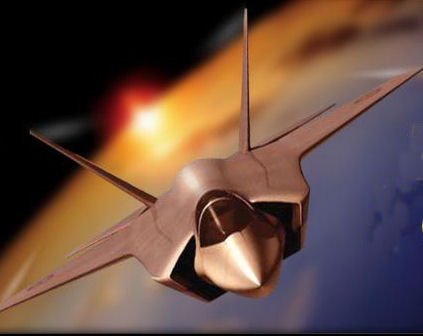
.jpg)
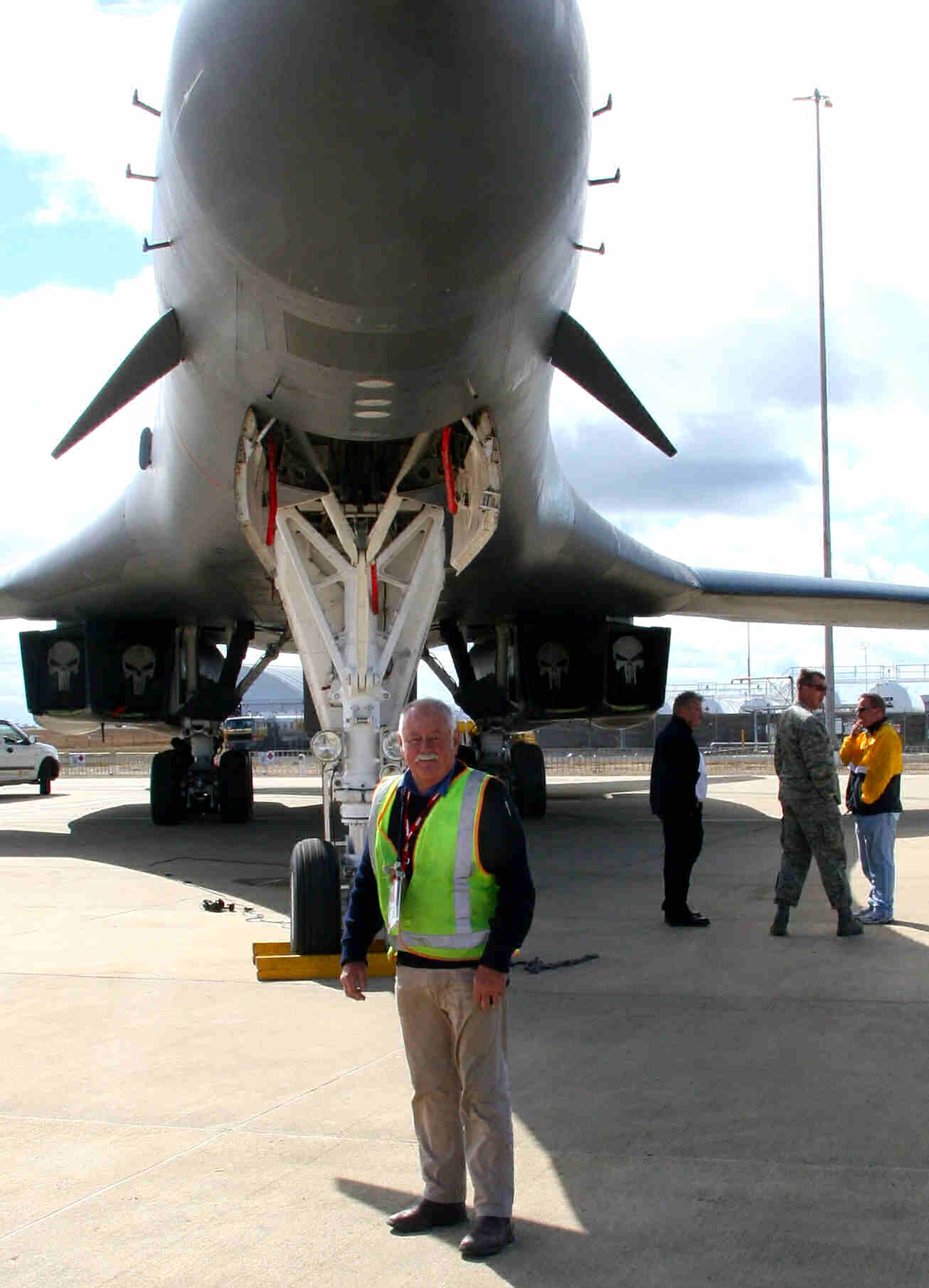 in the early 1970s, but its
production was cancelled and only four prototypes were built. In
1980, the B-1 resurfaced as the B-1B version with the focus on
low-level penetration bombing. The B-1B entered service with the
United States Air Force (USAF) in 1986.
in the early 1970s, but its
production was cancelled and only four prototypes were built. In
1980, the B-1 resurfaced as the B-1B version with the focus on
low-level penetration bombing. The B-1B entered service with the
United States Air Force (USAF) in 1986.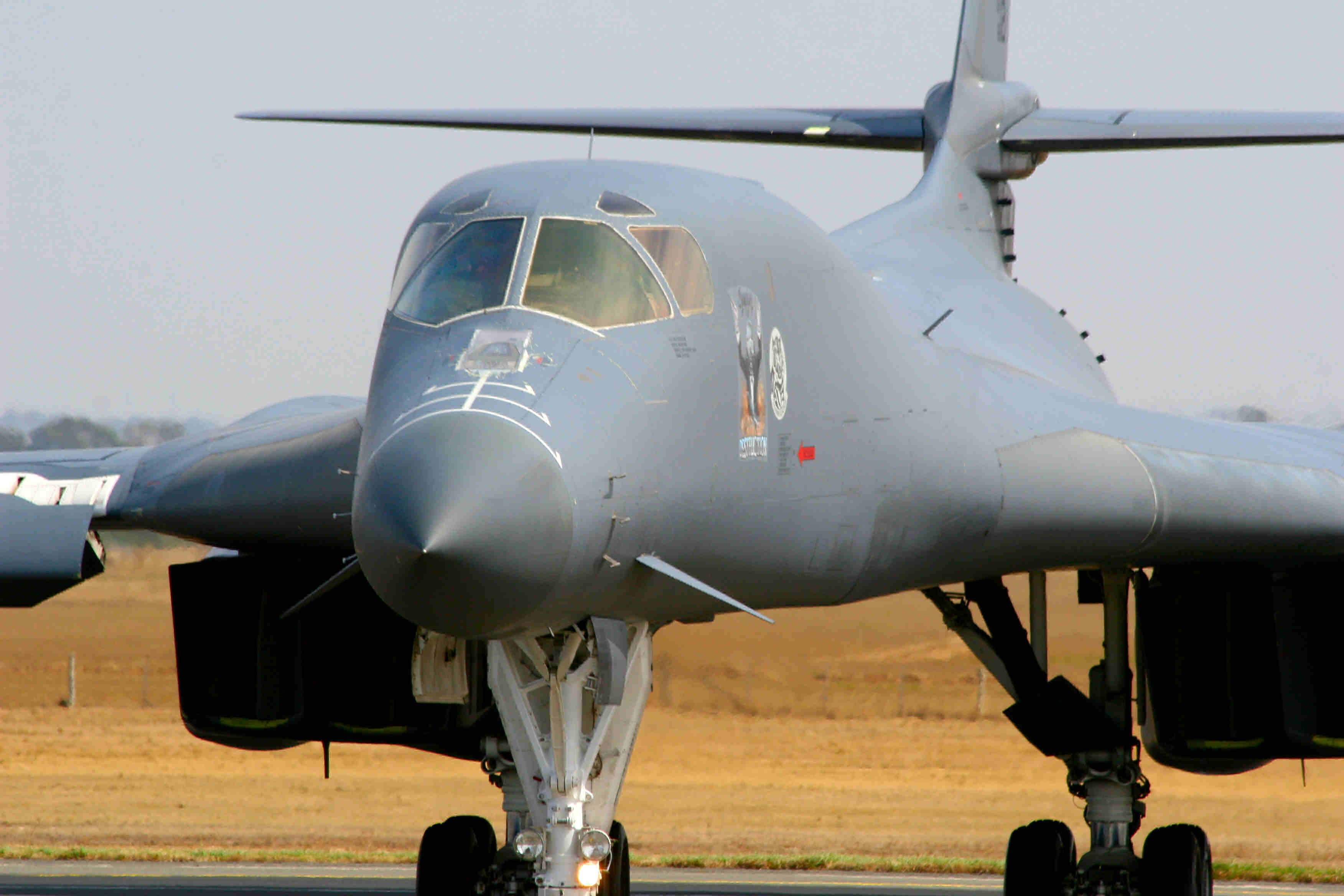
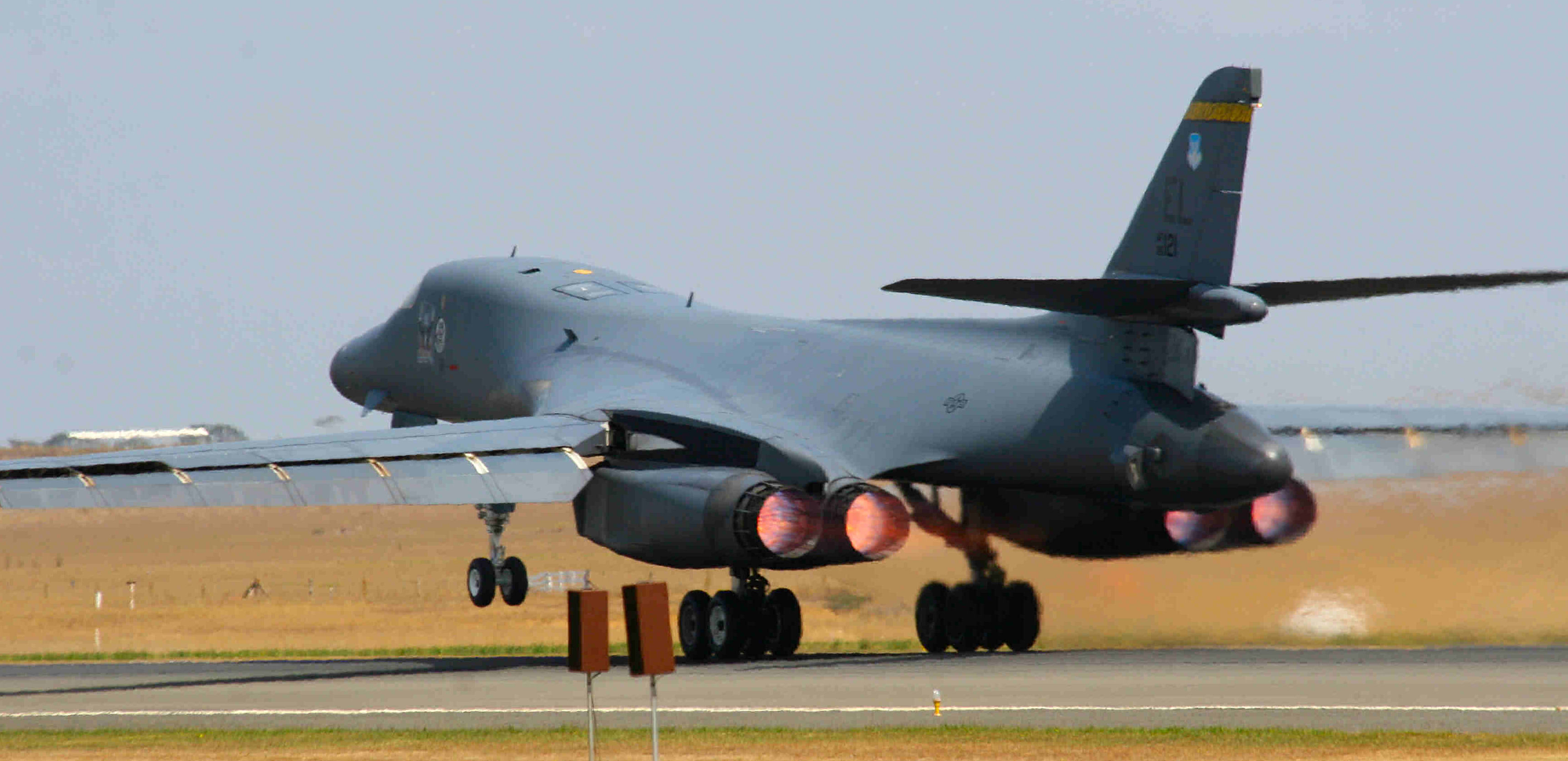
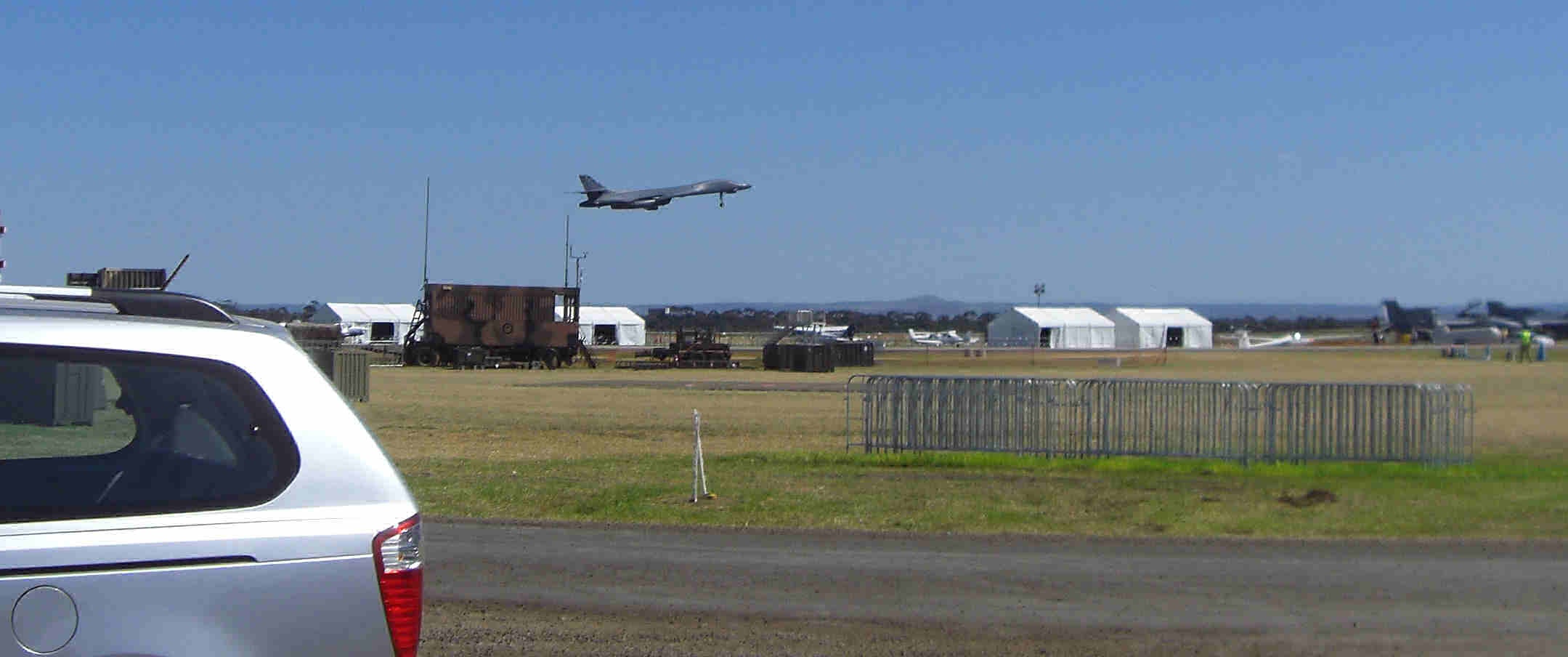
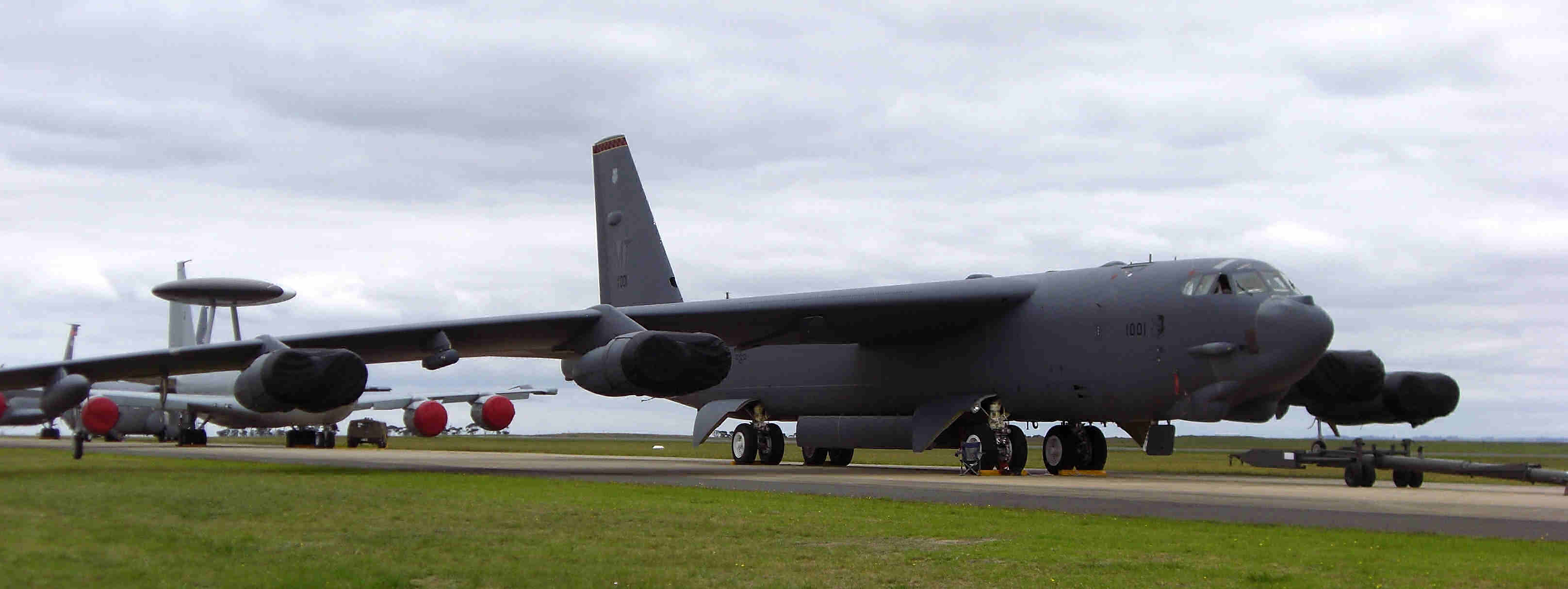
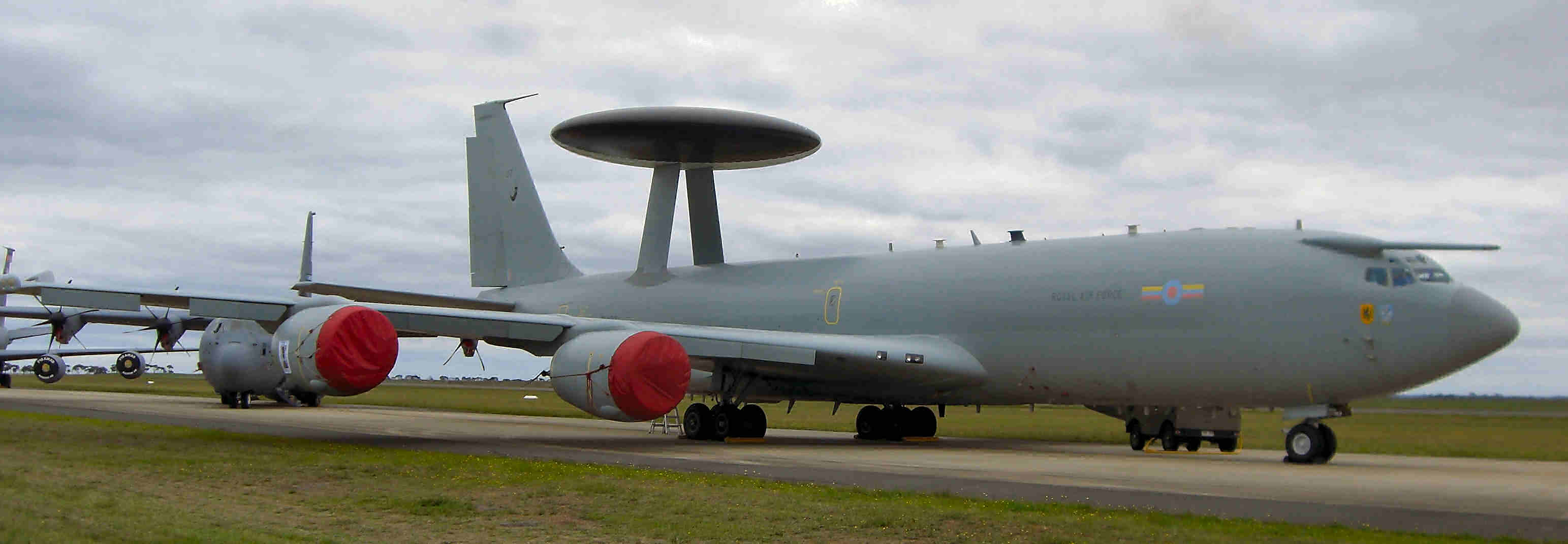
.jpg) Asia to support the tactical aircraft and the strategic bombers.
Asia to support the tactical aircraft and the strategic bombers.
.jpg)
.jpg)
.jpg)
.jpg)
